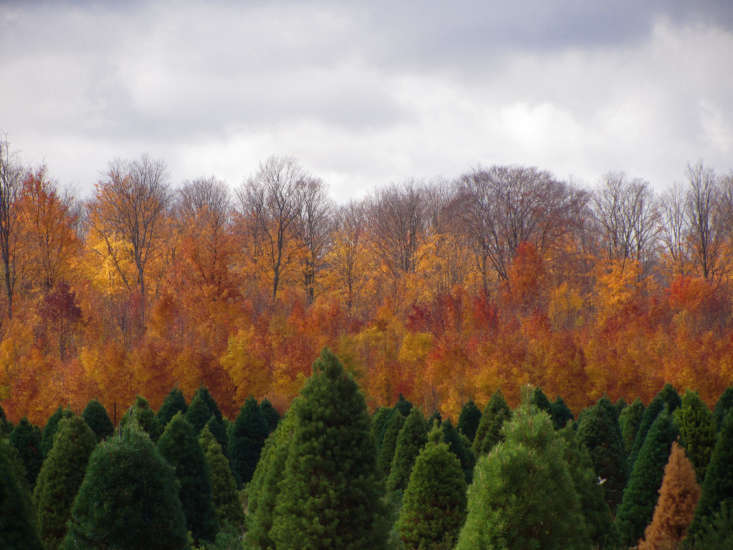Scots Pine, Pinus sylvestris: “Christmas Tree”
Native to temperate climates in much of Europe, Scots pine is the most widely seen pine in the world. Introduced to North America in the mid-18th century, Pinus sylvestris nowadays is the most commonly grown Christmas tree in the US. (Although mature pine trees can live in the wild for more than 700 years, trees grown for the holiday season are harvested when they reach heights of 6 or 7 feet, when they are on average seven years old.)
Scots pine (also known as Scotch pine in the US) is the national tree of Scotland, often planted as a single specimen to cast a majestic shadow over a landscape or in clusters of two or three smaller trees.
If you plant a pine tree in your garden, its crown at maturity will bear little or no resemblance to the iconic triangular shape of a Christmas tree. Depending on the cultivar, the full-grown height of L. sylvestis can range from 20 feet (‘Watereri’ looks more like a fat shrub than a tree) to more than 150 feet (the tallest Scots pines on record at in Poland, Estonia, and Latvia). Learn about more species of pine in Gardening 101: Pine Trees.
Is Scots pine the right tree to plant in your garden? Read on to learn more.

You can tell the relative age of a Scots pine by the length of its needles. Interestingly, younger trees have longer needles.

Depending on the cultivar, a Scots pine’s habit can vary from short and wide to tall and narrow (the columnar ‘Fastigiata’ has been known to reach heights above 50 feet; the record holder is a tree in Dryburgh Abbey in Selkirk, Scotland with a diameter of only 4 feet).
Cheat Sheet
- Known for its superior needle retention, a Scots pine used as a Christmas tree will look fresh for the duration of the holiday season.
- Notes the National Christmas Tree Association: P. sylvestris “is known for its dark green foliage and stiff branches which are well suited for decorating with both light and heavy ornaments.”
- Bright green needles are typical of Scots pine, although some varieties may have darker or blue-green needles. Buyer, beware: “It is often sprayed with green dye to give it a desirable green color for the holiday season,” warns the USDA.

Keep It Alive
- Scots pine is hardy in USDA growing zones 3 to 8 and will tolerate a wide range of soil conditions, from clay to sand.
- For best results, plant P. sylvestris in full sun.
- Drought tolerant after it is established.

Read more growing tips in Pine Trees: A Field Guide to Planting, Care & Design in our curated Trees 101 guides. Read more:
- Birch Trees: A Field Guide to Planting, Care & Design
- 5 Favorites: Silvery Conifers
- Beech Trees: A Field Guide to Planting, Care & Design
- Landscaping with Trees: The Best Design for Your Garden
- Olive Trees: A Field Guide to Planting, Care & Design








Have a Question or Comment About This Post?
Join the conversation